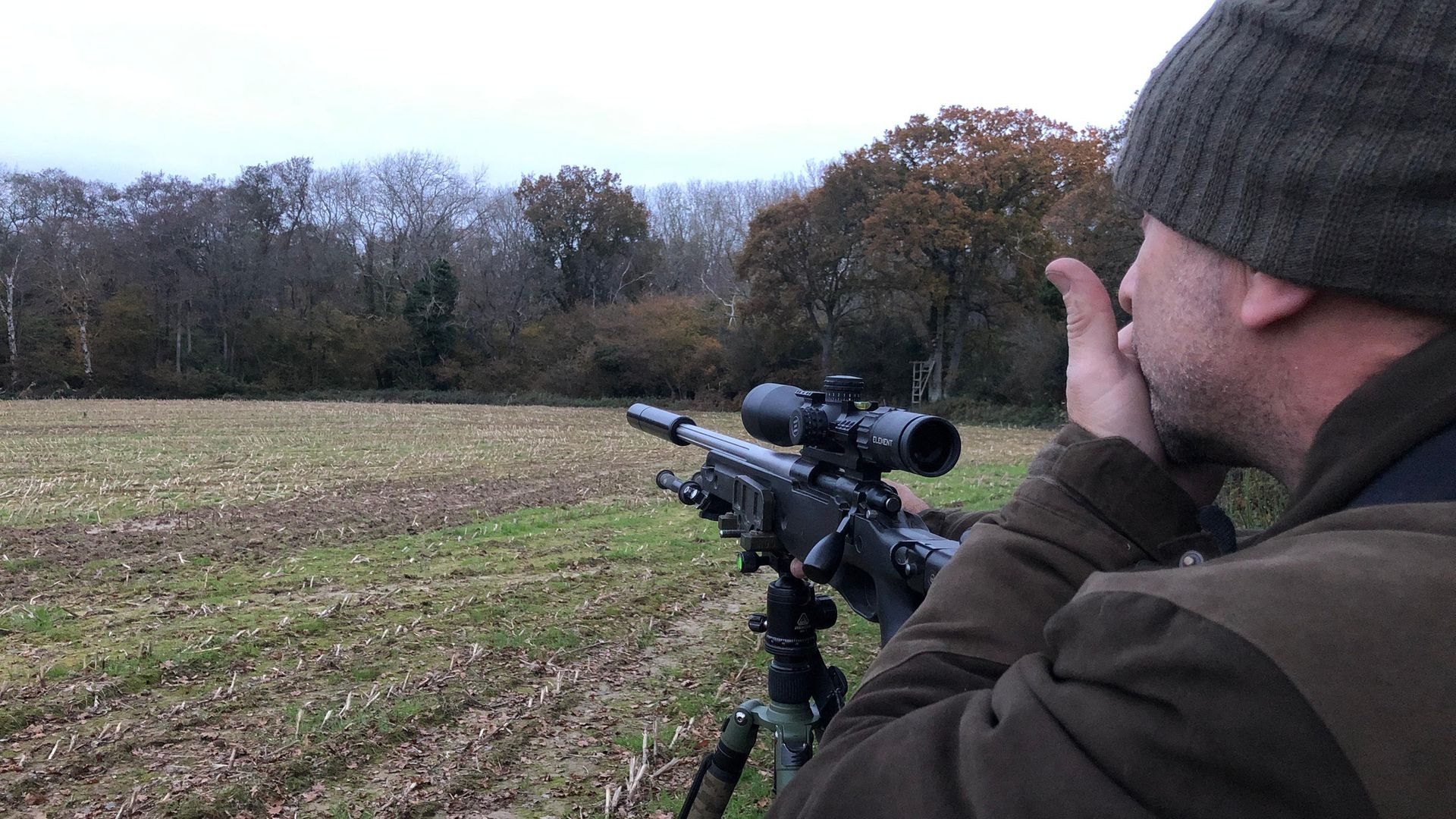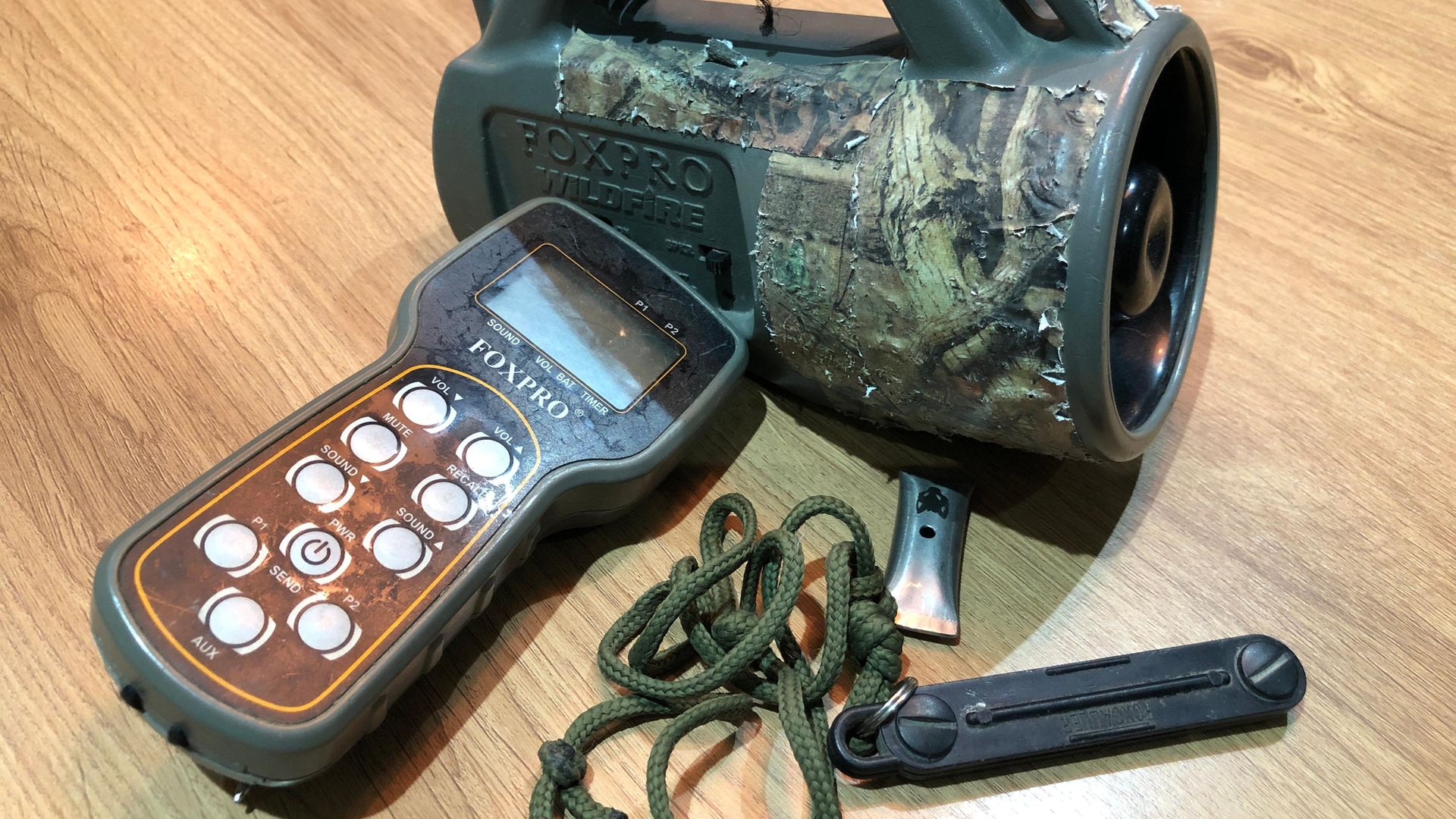Mark Ripley offers up a masterclass in fox calling. Are you ready to raise your foxing game to the next level?
I’m often asked about fox calling. When to call? What’s the best call to use? How loud? How often? And so forth. Well, all I can say is that there are no real right or wrong answers!
Calling isn’t an exact science and won’t always work. A call that might pull in a fox one day may well have the completely opposite effect on the same fox the next day.
The truth is that sometimes a fox will come in because it’s hungry, when other times it might come in purely out of curiosity. Sometimes it will simply ignore you, and other times a call might send it fleeing for cover.
Reading the fox's body language
One of the tricks to calling can often be reading a fox’s body language and reacting accordingly. The classic curious head-tilting response is likely to bring a fox in if you persevere. Often a fox will sit and tilt its head like this, intrigued by the sound, and will likely come in if you keep calling. If it doesn’t and it’s not standing up or backing away, you may well be able to carefully close the distance on it. If a fox sits staring in your direction you’ve most likely been rumbled, and if it’s looking from left to right it’s most likely deciding which direction to go in.
As a rule I don’t usually call if I can see a fox and can likely get close enough for a shot. If I can’t close the distance due to hedges or fences that might be noisy or impossible to cross, then a little mouth squeak might just be enough to entice a fox into range.
Sometimes when cover is limited and you’re confident that you will be seen if you try to get closer, then a call can work well. In these situations I generally use a little lip squeak, which is quiet but enough for a fox to hear. Foxes have exceptionally good hearing and can pick up even the softest squeak from hundreds of yards away.
If nothing is in sight, then calling is worth a go. I would generally pick a good place to call where I expect a fox might be, and be sure to tuck myself back into cover a little, ensuring I have some good tall bushes or trees behind me to hide my silhouette.
For this type of, shall we say, ‘ambush calling’ I’ll normally use an electronic caller, my favourite being one of the Fox Pro callers. I use the Wildfire model myself, as it’s small and compact and can be crammed into a large jacket pocket or small pack.
The main advantage to an electronic caller, at least with this model, is that it’s remote controlled, meaning you can place the caller out in front of you up to around 80 yards away. This has the distinct advantage of pulling the fox in to a focused point rather than directly towards you, so it’s less likely to see you standing there or spot any small movements you make.
The other advantage to this type of caller is that it’s capable of accurately reproducing a wide range of calls, from distressed prey animals to fox mating calls, and for around £200 is a worthwhile investment. I’ve lost count of the number of foxes I’ve called in with this unit over the years. Although the Fox Pro is an American brand, with an array of coyote, bobcat and other calls preloaded on the devices, there are also a good number of fox and rabbit distress calls that work very well here. There’s also a vast online library that can be downloaded onto many of the models.
 credit: Archant
credit: Archant
Mouth callers
There’s also a good selection of mouth callers on the market these days, some of which work, well such as the simply named ‘fox caller’ from www.bestfoxcall.co.uk. These little black lollipop-style callers can be held between the teeth and blown through to create a call, and by gently biting down on it the pitch can be varied, making for an easy-to-use and authentic-sounding rabbit squeal.
Success with calling depends on many factors, such as using the right type of call at the right time of year. For example, from around November until late January foxes will be pairing up and often the usual prey distress calls are less effective. This is a good time to use some of the mating calls installed on an electronic caller. If we have a bit of snow or the ground is frozen, then foxes will struggle to find food so are likely to be hungry. That’s when calling with prey distress sounds works really well.
Another thing to consider is what prey foxes are likely to find in your particular area. If you shoot in an area devoid of any rabbits, then perhaps a rat or distressed bird sound may work better. If you are shooting on an estate, for instance, then a pheasant distress call may work wonders. It’s important to use calls that a fox in that area will be familiar with.
I’ve also had some good results with the ‘juvenile fox cubs’ call on the Fox Pro. This can be a great one to use in the spring when foxes have their cubs, as it often brings in other cubs or curious adults. It also oddly seems to work quite well in the mating season – perhaps due to the general hormone change as foxes change priorities from filling their stomachs to fulfilling their desires!
Making use of the weather conditions
When calling, it’s also worth considering wind direction. The odds are that a wise fox will come in with the wind in its face on the lookout for danger and using its nose to assess what it’s walking into. Bear this in mind when setting up to call, as a wind in your face you could well bring a fox in behind you that will see or scent you and slink away unseen. Likewise, with a wind behind you a fox may well pick up your scent and shy away before it’s in range. Ideally, you want a wind crossing you, thus bringing a fox in from left or right of you from cover.
A set of sticks, or better still a tripod, is ideal for this type of shooting as you need to be able to get onto your fox quickly. Sometimes a fox will race in at speed and may need a shout to stop it for a shot. I will always be ready to mute an electronic caller the moment I have a fox coming in, as the last thing you want is for a fox to actually reach the caller.
Often, if they do, the game will be up and they will be off. That said, I’ve had the odd one standing staring at the caller wandering what it is!
Calling of any type generally works best at night, dusk or dawn, but it’s always worth a try at any time. I’ve called foxes in at all hours of the day, especially in spring when they are harder-pressed to feed cubs and out hunting more often.
A fox that is already uneasy is a lot less likely to respond to a call and is more likely to see it as a further sign of danger and disappear. Foxes have an amazing gift for survival, and the slightest hint that something might be wrong would likely be enough to see it beat a hasty retreat. Although, like humans, there are a few that are not so bright and easily culled.
 credit: Archant
credit: Archant
A fox's "three stage warning system"
My good friend and fellow writer Mike Powell has an interesting theory, and it’s one that I would agree with in that a fox has a three-stage warning system – sound, smell and sight. Trigger any two of these and the fox is off.
So in other words, if a fox sees a slight movement he might stand and stare if he’s unsure what it is. If he then smells or hears something he doesn’t like, then a second sense is triggered and he’s off. So many times I’ve heard comments like, “As soon as the IR went on, the fox was off!”
The likelihood is that it had already heard the truck door close or the gate latch clink, and the sight of the IR light was the second flight trigger.
The bottom line is that foxes are extremely intelligent creatures, and calling them isn’t by any means an exact science. Sometimes it works well, and sometimes it just doesn’t work at all .
Hopefully, with a little practice and some of the above pointers, you will at least have some degree of success with this extra string added to your foxing bow.